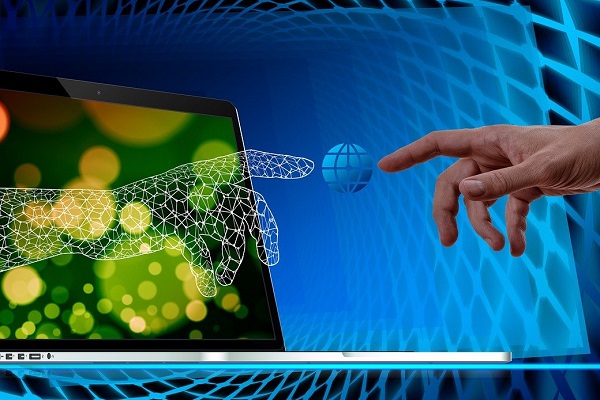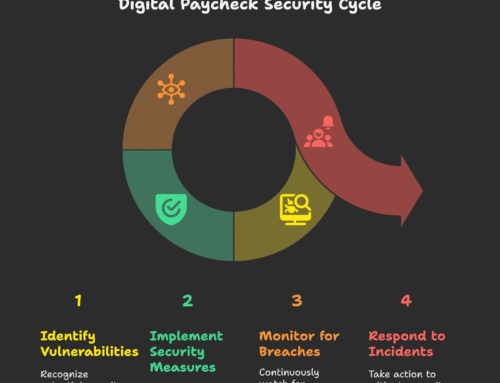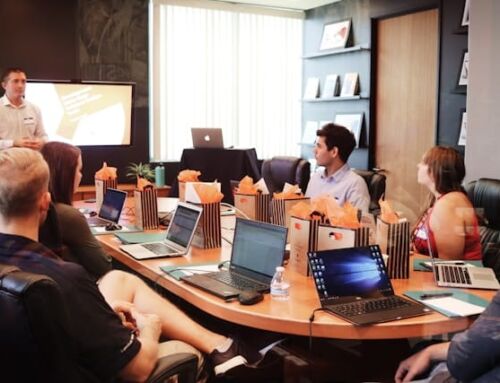The majority of individuals comprehend information more quickly and effectively when it is presented graphically. Emojis, GIFs, pictures, and videos are frequently used in discussion these days. At work, it’s also accurate.
It used to be true when the majority of us worked in traditional offices, and it’s still true now with the prevalence of remote or hybrid teams.Firms must embrace graphics and video even more.
Businesses who are slow to innovate or modernize their processes will lose ground so they have to enhance visual elements for productivity. Graphics and video are crucial for effective workplace communication, and hybrid effort is required to discover new and better methods to interact online with coworkers. When employees haven’t had enough time to acclimate to their new work environment, it may be difficult for businesses to interact with their remote staff.
When teams share a space, the interpersonal connection that results disappears. This invites misinterpretations and false information. While email and team chat services are popular at the moment, visual elements communication is another way to keep dispersed staff in the loop.
Due to the uncertainties caused by COVID-19, many businesses and universities have encouraged their employees to work remotely. The new limits will require many workers and their bosses – to work outside the office for the first time, distancing them from one another.
Image by Gerd Altmann from Pixabay
The Benefits of visual elements for productivity and Four Ways to Use Them Immediately
Finding new and better ways to engage online with coworkers is necessary for hybrid work and graphics video are the foundation of efficient office communications.
The best part is that asynchronous communication is beneficial for your company as a whole, not just for your employees. You’ll be more productive, make fewer errors, and stop receiving feedback.
Additionally, your staff will be more motivated than before. We’re not asking you to completely give up email, so don’t worry. We’re merely offering an improved solution.
How visual elements are more effective for distance communication
Using visual elements to communicate a message, motivate behavior change, or arouse feelings is known as visual communication. Both attractive and instructive visuals are necessary for effective visual communication. The key to effective visual communication is choosing the pieces that will best convey your message to your audience.
When you work in a specialized area like finance, business development, engineering, or healthcare, it might be difficult to produce interesting material that demonstrates the value of your company.
But in situations like these, visual elements excel. You can present yourself as the market’s innovative answer by developing distinctive images.
What is the real worth of visuals?
We conducted a significant research study a few years ago called The Value of Visuals. We wanted to know if using visual elements and video to communicate was indeed superior to using plain text, but we also wanted to know if doing so hard has any financial advantages.
Each user received a different set of instructions for each activity, either in the form of video, plain text, or text with screenshots or photos annotated. When they finished their jobs, we evaluated their performance.The outcomes were astonishing.
Overall, 67% of those examined performed tasks more successfully when given instructions in the form of graphics or videos. When asked about the tasks afterwards, they recalled the knowledge better and for a longer amount of time.
In fact, according to our research, each employee could increase their daily productivity by over seven minutes if their employers used more photos and videos in workplace interactions.THis can be done when the employees have the proper visual elements for their knowledge repository.
The workforce wants more visuals
In addition to the obvious economic advantages, your staff members want for more visual elements at work.
According to a study, 48% of workers believe that video is the most engaging form of communication. The most engaging content, in the opinion of 37%, includes visuals.
Less engaged workers experience a diminished sense of kinship with their coworkers, employers, and industry. The feeling of separation that can already exist with remote or hybrid work serves to exacerbate this.
However, properly engaged staff members experience a sense of belonging to something greater than themselves. They are driven to produce superior work.
They care more about their customers when they sense that their organization values them.
Four simple ways to use graphics at work
1.Instead of meetings, use video
Even though the location is virtual, attendees shouldn’t need to be there at the same moment for purely informative sessions.
Try substituting a video for the meeting if you have material to share with your team that doesn’t call for quick comment or brainstorming.
You can type out anything you want to say and then share it with others without being interrupted or having a conversation off topic.
Use to record your screen as you narrate if you have slides to present. No slides? No issue. You can capture your webcam to add a more human touch to your video.
This method of delivery shows more consideration for the time of your staff. They can watch the movie at their convenience if they don’t need to know the material right now. Additionally, students can always go back and rewatch if they need a reminder.
Additionally, they can approach you privately if they have any queries or if you do require comments.
2. Furnish visual proof
Visual elements help you to do something similar, this is one of the greatest methods to start integrating graphics in office and remote conversations.
Almost all of us have been required to revise and proofread a document that someone else has written. We print it out, take out our red pen, and make annotations in the appropriate places on the printed pages.
Unfortunately, that doesn’t really work in a remote or hybrid environment unless you then wish to scan your pages and email them.
3. Create training materials that are evergreen.
Effective onboarding equips new hires with the effective knowledge base software and resources they need to succeed in their new positions. Getting face-to-face training time in a distant situation isn’t really an option, but creating video and visual elements can help to put them on the right track.
Visual and video content makes perfect sense for both initial employee training and ongoing staff development.
It’s excellent for things like learning how to log into the network or use HR systems. Even better, record a little video in which you respond to the top four queries from new recruits.
This is more logical, even for tiny businesses. You can still benefit from your training material while engaging in other activities. You’ll work more on other projects and spend less time away from your job.
4. Have software rollouts that are more effective
At some point, almost every firm must implement new software. Your staff may find it to be highly annoying and disruptive, especially if it is poorly conveyed.
To demonstrate how to highlight software features during an internal rollout, use screenshots and screencasts with visual elements. Create a brief screencast that can be quickly shared with your team or the entire organization
Users can keep current skill sets while learning new features with the aid of brief training sessions. Training staff members in advance of software rollouts can assist stop productivity loss.
Final Thoughts
Since the visual elements divide information into smaller, simpler processes, pictures can be easier to understand than text-based or audio explanations. Since everyone can quickly associate feelings with images. Your eLearning courses will be more interesting and memorable.
You should use visuals while communicating with teams who are spread out since they are processed 60000 times more quickly than text.
Utilize clear and pertinent graphics to add meaning to your messaging and prevent misconceptions. Everyone will be on the same page and on schedule to accomplish their goals if they do this. Above all, visual elements will keep employees engaged with the company.
That is the best course of action to make sure that you come out of this situation as a cohesive team.






Leave A Comment